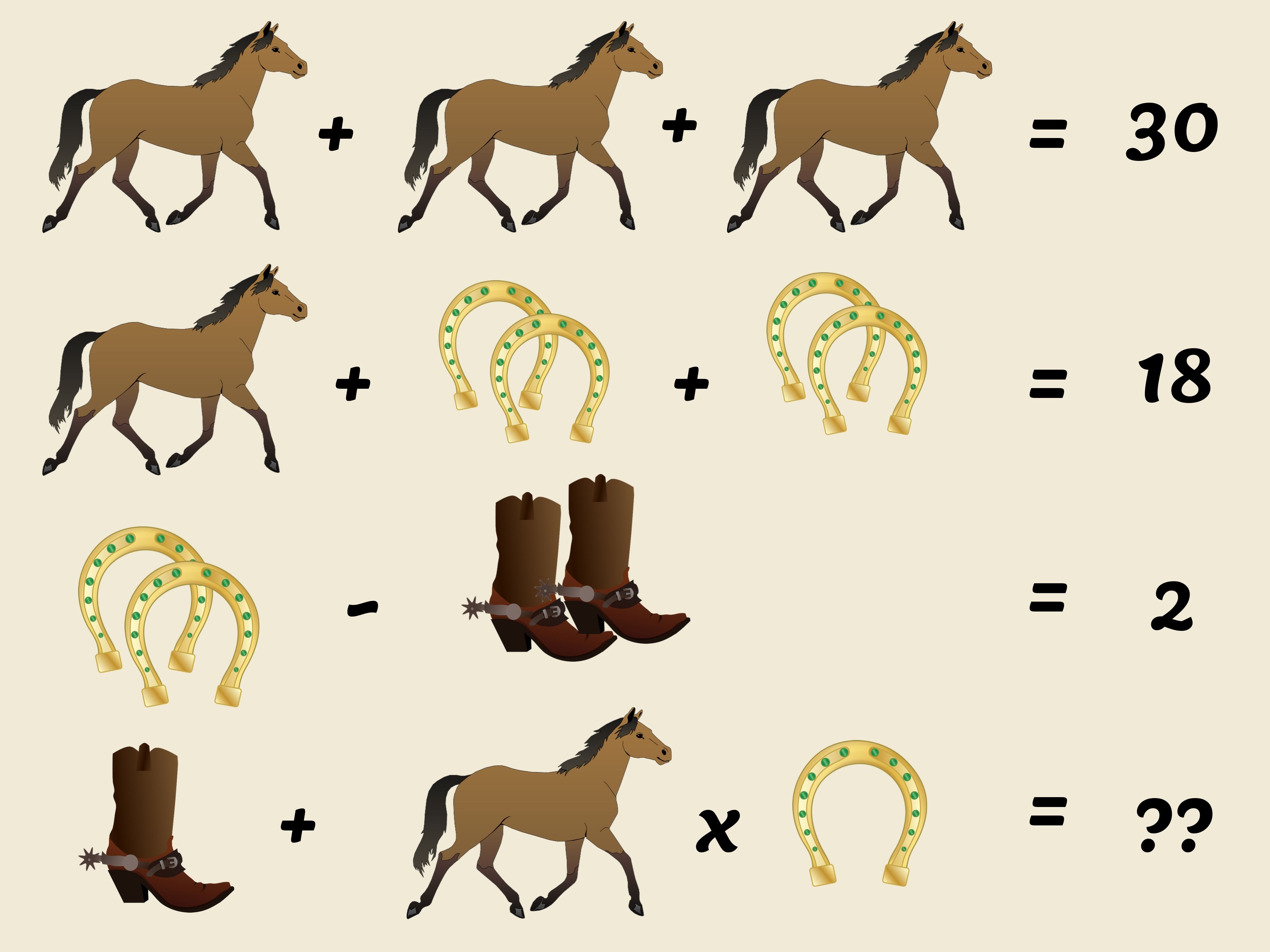Can You Solve This Horse Algebra Problem That Has Sparked Debate?

This simple algebra problem has stumped social media users who claim to be math experts squaring off against each other. The problem has elicited at least six different answers. How could something so simple be so difficult?
Lets see if you can solve this Wild West-themed math problem.


There are three different symbols with different values: horses, horseshoes, and boots. If you look at the first line, which has a total value of 30 from three horses, we can conclude that the value of each horse is 10.
Moving on to the second line, we can subtract the value of the single horse from 18. This leaves us with a value of 8, which when divided by four horseshoes yields the result as 2 per horseshoe.
In the third line, we can see that subtracting the value of the two boots from 4 gives us 2. So this must mean that each boot is worth 1. So far, we know a horse = 10, a horseshoe = 2, and a boot = 1.
Now for the final problem, which reads boot + horse x horseshoe, or 1 + 10 x 2. Once again, it all seems very easy and straightforward. Its hard to imagine that the solution to this problem could divide the internet. This is the kind of problem that a child might have solved in elementary school.


Everyone who has commented on the original post can agree on what weve done this far. Its what comes after that causes conflict. The issue is which to do first. The problem reads 1+10×2. We are usually taught to proceed from left to right in any given problem. Many social media users followed this mantra and ended up with the following 1+10=11. Next, they multiplied the problem by 2, yielding an answer of 22.
The problem is that we have two operations to perform: addition and multiplication. But just because addition comes first when proceeding from left to right doesnt mean thats what you should do first. Remember PEMDAS? (Please Excuse My Dear Aunt Sally), which separates the order of operations into the following: 1) Parentheses and Exponents (this includes roots), 2) Multiplication and Division, and last but not least, Addition and Subtraction.
To show the precedence of multiplication over addition, you could rewrite the problem as 1+(10×2) or make things even easier, (10×2)+1. Looked at this way, we can see that we are left with 20+1=21. So 21 is the right answer.


The fact that the answer depends on a correct understanRead More – Source

















